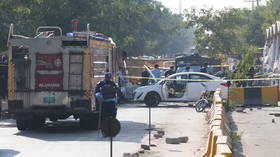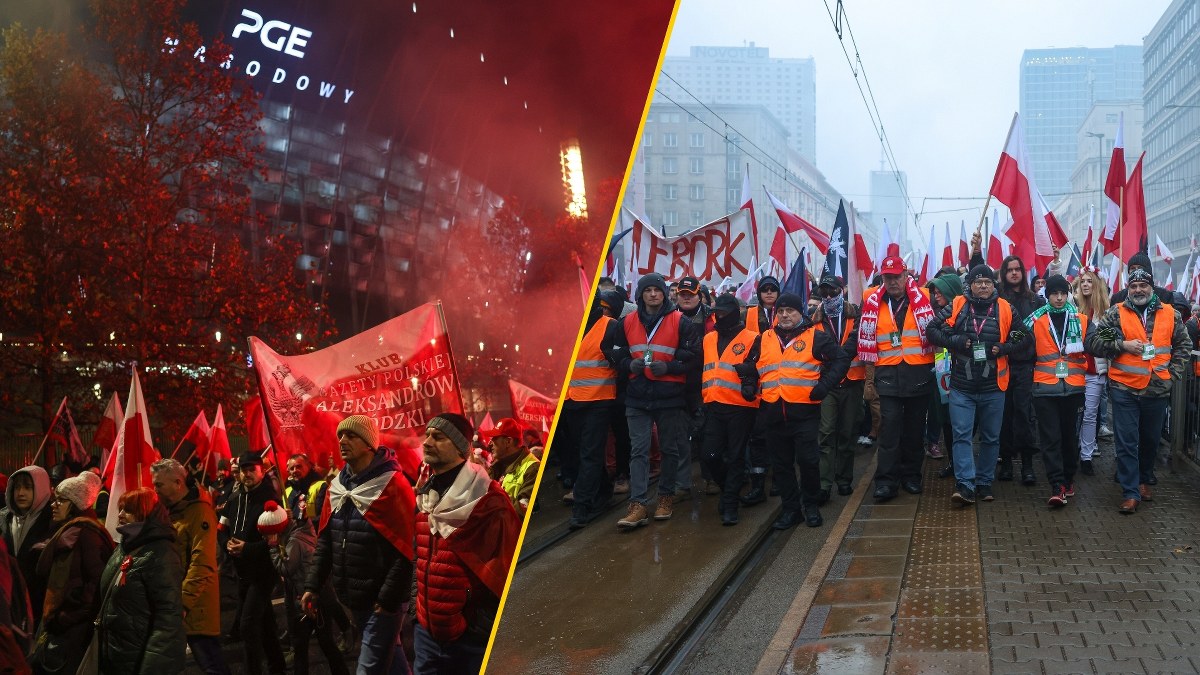The Suwałki Gap is one of the ignition points on the map of the world, and at the same time – one of the favorite topics of Belarusian and Russian propaganda. However, the probability that a narrow piece of land between Poland and Lithuania will become the arena of military confrontation is extremely low today.

The scene looked something grotesque – Belarusian dictator Alyaksandr Lukashenko in a military uniform, holding a white spitz dog on his knees, questions his military personnel, including the chief of the North-West Operational Command: “We should know exactly what they [NATO] want. Oh, how they keep talking about this Suwałki Gap. How many kilometers are there to Russia, to the Königsberg region from our borders?” “In a straight line 42... [in fact, this distance is more than 20 km longer]”. “It’s as much as nothing [...]. At this point, you will have to face the Baltic states. And you will seize part of Poland. It has been planned. Are you sure that your troops will manage to control the area along the front?” “Military personnel are constantly being prepared. Orders are carried out.”
Ignition Point in the Forest
The conversation took place at the end of March, during the inspection of Belarusian troops on the border with Lithuania, and the recording itself was made public in the Telegram messenger. It was posted on the Pul Pervogo Telegram channel, similar to Lukashenko’s press services. The topic is not new. The Suwałki Gap has been one of the favorite motifs of pro-Kremlin propaganda for at least two years. On the one hand, it is considered a symbol of NATO’s aggressive attitude, on the other, its soft lower abdomen – a territory that the troops of Russia and Belarus can occupy practically offhand. On the condition that they are provoked to do so earlier, obviously. Cheap trick? Or maybe the Alliance should actually be on guard?
The Suwałki Gap is a narrow strip of territory on the border of Poland and Lithuania. It separates Belarus and Kaliningrad region belonging to Russia. “At the narrowest point, the borders of these countries are only 65-km long in a straight line,” emphasizes Professor Krzysztof Fedorowicz, a political scientist at Adam Mickiewicz University (UAM) in Poznań, and a senior analyst at the Institute of Central Europe (IEŚ) in Lublin. In 2015, General Benjamin Hodges, then Commander of the US Army in Europe, called the Suwałki Gap one of ignition points on the world map, indicating that this is where an open conflict between Russia and NATO may break out. “The only land connection from central Europe to Lithuania, Latvia and Estonia is through the Gap. If Russia takes control over it, it will cut three members of the Alliance off from the supply and military assistance,” reminds Professor Fedorowicz. Although the admission of Sweden and Finland to NATO improved the geostrategic situation of the Baltic States, the problem has not been solved. “The Alliance has now more opportunities to transfer supplies by sea if necessary, but I’m far from saying that the Baltic has become an internal water area for NATO. Russia still has its bases there, has retained operational capabilities and in the event of war, it may attempt to block shipping routes,” believes the analyst. “In my opinion, NATO’s expansion to the north has in no way reduced the importance of the Suwałki Gap,” he adds.

The Alliance members seem to understand this perfectly. In 2017, under the provisions of the Warsaw Summit, four multinational battalion combat groups (enhanced Forward Presence – eFP) were deployed in northeastern Poland and the Baltic states. Five years later, at the summit in Madrid, the decision was made to enlarge it to the size of brigades. The Polish Armed Forces also strengthen their potential in the area of the Suwałki Gap. The command of the 16th Pomeranian Mechanized Division was transferred to Olsztyn from Białobrzegi. Tactical unions and subdivisions that are part of it are located in various parts of Masuria and Suwałki regions. Newly purchased equipment, such as K2 tanks and K9 howitzers, has been being delivered to the soldiers for some time. The 18th Mechanized Division is also stationed near the borders with Belarus and Russia, and soon the 1st Legions Infantry Division, formed in Mazovia, should join it. Also, several thousand soldiers from the Podlasie Military Task Force, who are stationed in this sensitive area on a rotational basis, are also located there.
With a view to defending the Suwałki Gap, some time ago a special Polish-Lithuanian plan – called “Orsza” – was created. The scenario of Exercise Brave Griffin 24/II follow the assumptions of this plan. In April, 1,500 soldiers and 200 pieces of equipment from four NATO countries arrived at the training ground near Druskininkai in Lithuania.

What can a potential opponent oppose the Alliance? Rather not much... “The Belarusian army has about 40,000–50,000 soldiers, but perhaps a third of them are ready to participate in any military action,” says Kamil Kłysiński, an analyst at the Center for Eastern Studies (CSW). “Belarusians lack modern equipment. The armament of more value has long since been sent to Russia. The army has low morale, and most of the troops are still rather poorly trained,” he enumerates. An independent attack on NATO territory for Lukashenko’s troops would mean suicide. Belarusian subunits can at most provide some support for Russia, only that Putin is stuck in Ukraine. The Kremlin not only did not increase the number of troops near the Suwałki Gap, but was also forced to transfer a large part of them to the front.
Good for Defense
However, this is not the end. “The Suwałki Gap due to the terrain conditions is much more conducive to potential defense than to an attack. This is especially true for its Polish part,” emphasizes Professor Fedorowicz. “This is a hilly area, largely overgrown with forests, rich in lakes. The main roads lead from south to north, i.e. from Poland to Lithuania. There are much fewer tracts that military columns could travel from Belarus to the Königsberg region,” he adds.
The situation is slightly different in the northern part of the Gap. “Lithuania and Belarus were once part of a single state organism – the USSR. Therefore, the road network between these countries is relatively coherent. Lithuanian and Belarusian railways to this day also use rails with a wider gauge than that in Central and Western Europe,” explains Professor Fedorowicz. This theoretically speaks in favor of a potential aggressor. Still, however, as experts emphasize, the risk of attacking the Suwałki Gap is low at the moment. The beliefs that NATO will hit its first blow from there should be put between fairy tales. So why are Belarusian and Russian propaganda very eager to play this card? “It’s about heating up tension, trying to sow chaos, but also consolidating your own societies in the face of the alleged threat. Lukashenko’s recent actions are a perfect example here. The more cheesy and incoherent his message is, the more likely it is that it was prepared for internal use,” argues Kłysiński. “Belarus remains completely dependent on Russia. After the falsified presidential elections in 2020, however, Lukashenko tries to legitimize his power in the eyes of citizens in every way. He is trying to strengthen the image of a strong leader, a leader on whom the security and stability of Belarus depends,” he adds. Meanwhile, Professor Fedorowicz draws attention to another aspect. “Lukashenka’s rhetoric can be calculated on Putin’s belief that Belarusian troops are needed on the border with Poland, for example, to follow NATO movements. In this way, he tries to dismiss the vision of sending his troops to the front. Putin could force it on him, while for Lukashenko himself it could mean a real disaster. Belarusian society does not want war. A weak army would probably be quickly broken up, and thus one of the pillars on which the entire Lukashenko system was based would collapse,” notes Professor Fedorowicz.
This does not mean that when thinking about the Suwałki Gap, the NATO strategists should not worry.
You Want Peace...
“The areas of the Polish-Lithuanian borderland may not be conducive to the offensive of heavy brigades, but, unfortunately, they are relatively convenient for diversionary and hybrid activities,” believes Professor Dariusz Kozerawski, an expert in the field of security sciences from the Jagiellonian University (UJ) and a colonel in reserve. “The forest-lake area potentially creates good conditions for the operation of special forces, reconnaissance, light infantry, or special services. In theory, such groups could operate in an area reaching up to several dozen kilometers deep into Polish territory, and their detection and neutralization would require the involvement of large, professionally prepared forces,” he adds. Obviously, the more significance both Poland and NATO attach to guarding the Suwałki Gap, the lesser the effectiveness of such infiltration is. It is not just about the number of troops, infrastructure is also important. In mid-May 2024, Prime Minister Donald Tusk announced the launch of a long-term program for the construction of fortifications, ground obstacles and bunker lines along the borders with Belarus and Russia. For the creation of the so-called Shield East, the state plans to allocate 10 billion zlotys.

Meanwhile, as emphasized by Professor Kozerawski, there is still a lot of work ahead of us. “It’s a good move, but more are needed. For example, we need to train reserve forces or expand capabilities to quickly receive and deploy much more NATO troops on the eastern flank than now. In addition, at the least you need appropriate facilities, which must be taken care of by the so-called host nation. The next challenge concerns the entire Alliance, and is associated with a rapid strengthening of the arms industry potential. Especially when it comes to the production of ammunition,” the expert enumerates. This is important in the context of events in Russia. “Putin put the Russian economy to a war mode. Recent changes in the Russian defense ministry may mean that in the long run, Putin seriously takes into account the testing of NATO readiness, and particularly the ability of its eastern flank countries to react to various forms of aggression. In this context, the task of the new minister would be to properly balance the spending on armaments, which consume as much as 40% of the budget. After all, Andrei Belousov is an economist,” reminds Professor Kozerawski.
For now, the battle for the Suwałki Gap, which could be a prelude to an open NATO-Russia confrontation, remains only a propaganda construct. A bigger and more actual problem are the recurring stages of the migration crisis, which Lukashenko, probably in agreement with Putin, has caused on the Polish-Belarusian border. However, the Alliance must be prepared for any eventuality. “Russia can concentrate significant forces in Belarus, if only under the guise of exercises, and then deploy them, for example, in the vicinity of Grodno. The training ground there ends barely a few kilometers away from the Polish border,” explains Professor Kozerawski.
Such a scenario seems unlikely at the moment. At least until Putin plays in his favor the war with Ukraine. However, NATO decision-makers can never forget the old maxim: “Si vis pacem, para bellum” – “You want peace, prepare for war.” Today, it is still relevant.

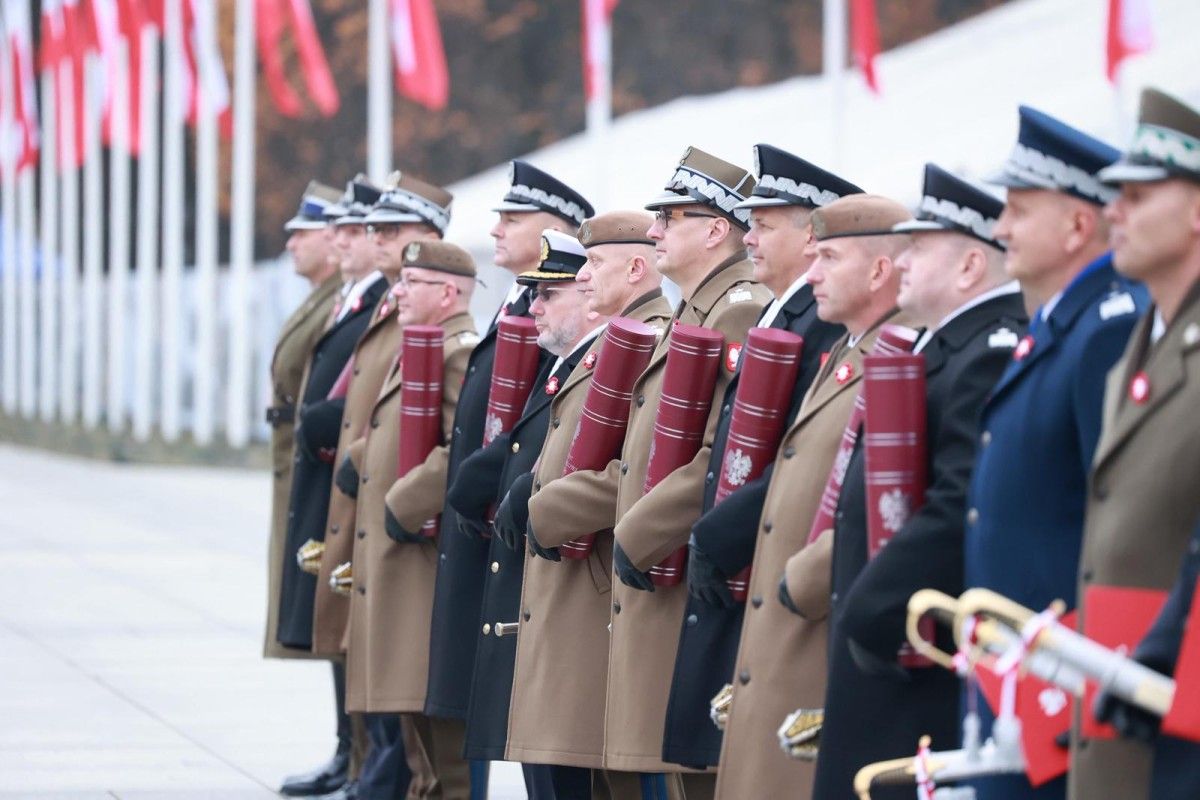
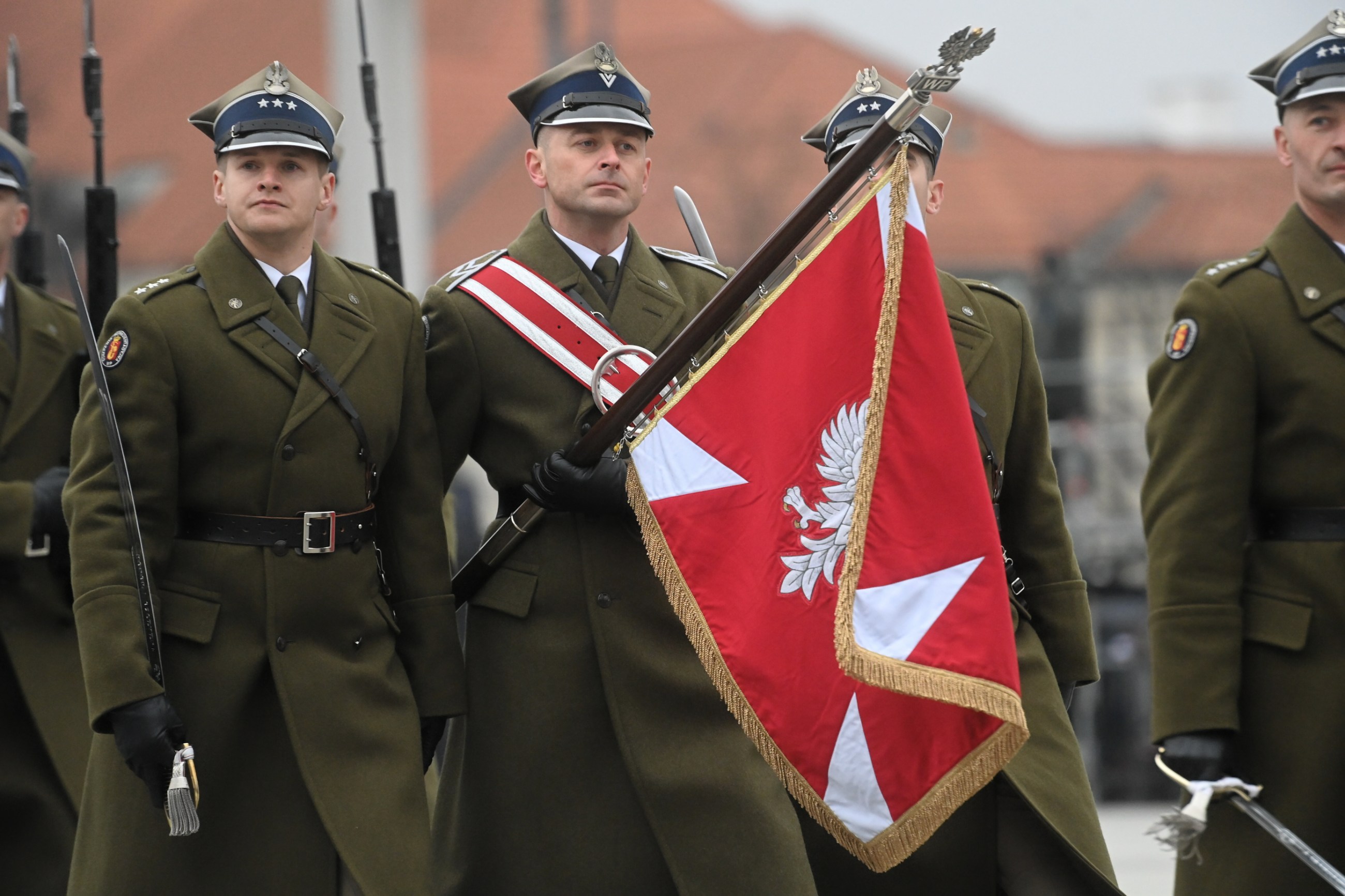
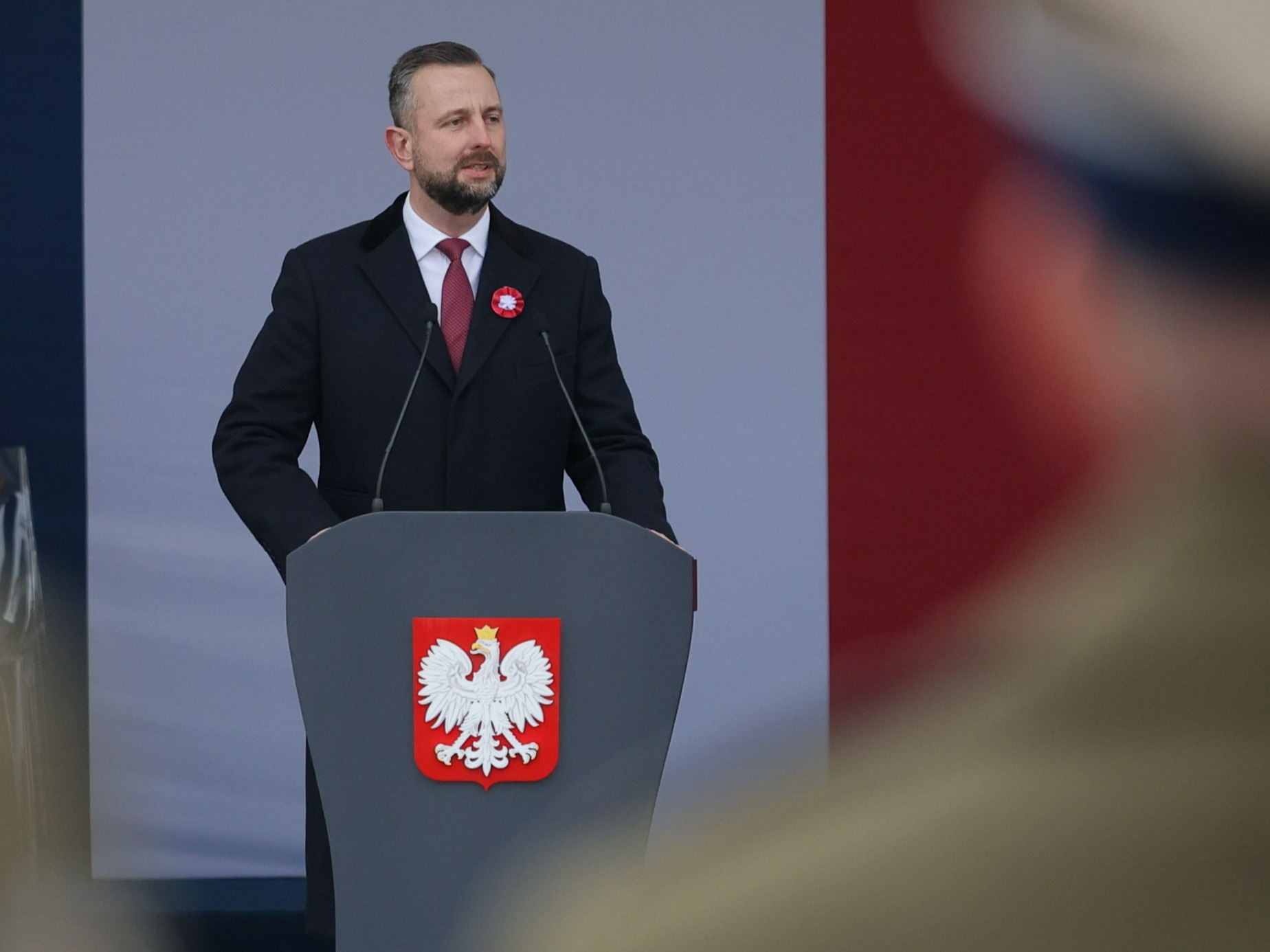
![Rosyjski test gotowości. "Wojsko Polskie i NATO zdały egzamin" [WYWIAD]](https://cdn.defence24.pl/2025/11/10/1200xpx/xV4hcYIf7KpQtsXZjOLkoQkWlo0kaUHBM6RUjSBZ.xgit.jpg)
